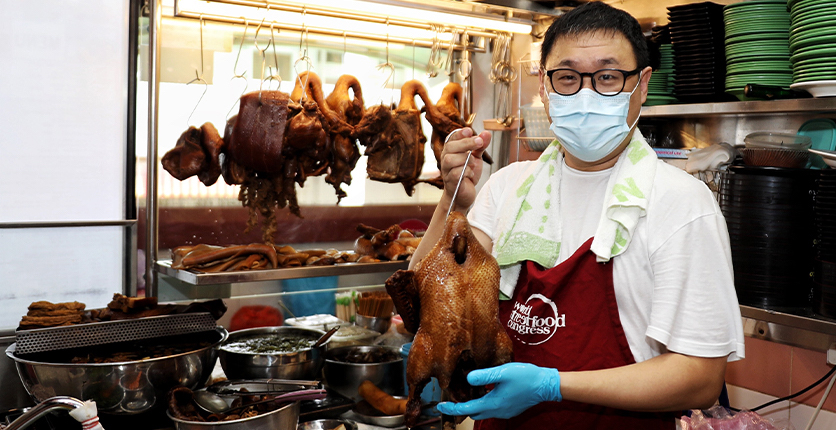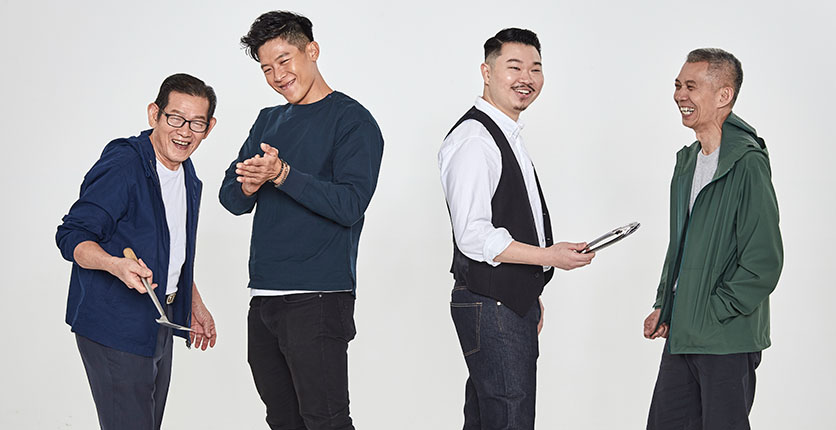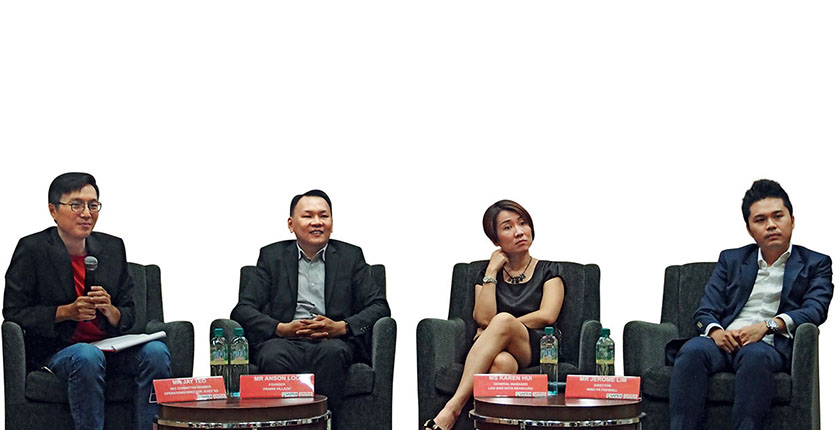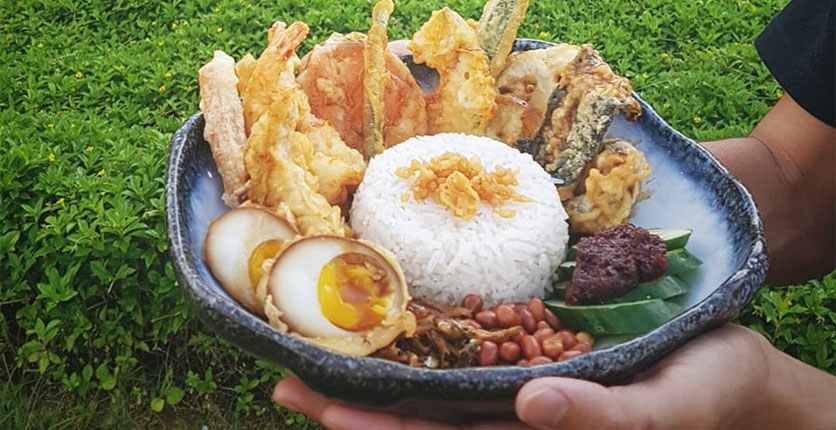When Covid-19 struck last year, Melvin Chew took it upon himself to help his beleaguered fellow hawkers overcome the crisis by setting up Hawkers United – Dabao 2020, a Facebook platform that allows hawkers to promote themselves, as well as Delivery United, which connects hawkers with food delivery drivers.
Today, even though the pandemic in the nation has come under control, the boss man of Jin Ji Teochew Braised Duck & Kway Chap is still very much involved in helping his fellow peers and preserving Singapore’s hawker culture.
We speak with him to find out more about his life as a hawker and what else he has up his sleeves.
How did you get into the hawker trade?
Before I became a hawker, I worked in a company handling claims for car accidents. After my father passed away in 2014, my mother wanted to close the stall, and this was when I stepped in to say that I would take over the business. My mother was initially against the idea. People of their generation usually don’t want their children to become hawkers because it’s a tough profession.
But I couldn’t bear to just let the stall go. This hawker business was how my parents fed me and my two siblings. Also, before his death, my father had big plans for the stall, like expanding it and improving its branding. I felt like it was only right to take over and help him fulfil those wishes.
What is a typical day like for you?
I wake up around 4am and get to the stall by 6am to begin prepping the food. The stall opens at 10am and closes at 6pm, following which I clean the premises and head home at about 8 or 9 pm. During the non-peak hours when I get a breather, I try to work on our marketing efforts on social media.
View this post on Instagram
What changes did you make after you took over the stall?
When I took over, our stall wasn’t as well-known as it is today. Back then, our regular customers were old uncles and aunties. As such, I wanted to attract the younger crowds. I knew that Japanese food was popular, so I decided to add a Japanese spin to things, like serving kway chap in the form of a bento set. I also thought that if chicken rice could be served as a ball (like in Malacca), why not the yam rice that we serve with our braised duck? We were very lucky that these new offerings went viral later.
What do you think are the biggest challenges facing our hawker culture today?
The biggest challenge is manpower. Hawkers are only allowed to hire Singaporeans or Permanent Residents. However, these groups of people don’t want to be hawkers, even if I’m offering them a good pay. Even if they want to enter the hawker trade, they want to be their own bosses.
Because of this, many hawkers are overworked. From what I’ve seen, most of the older hawkers simply work till they fall seriously ill before deciding to close their stalls and retire. When you hear of famous stall closings, this is usually the case.

Do you think that perceptions of the hawker profession are changing?
Definitely. I remember that being a hawker used to be seen as a lowly profession. Back in the 70s, my teachers would nag, “If you don’t study hard, you will end up cooking char kway teow!”
It’s a different story today. Since becoming a hawker, I’ve had the chance to represent Singapore and showcase our culinary culture at international food events. I’m very proud of my profession!
Do you think your NS experience has helped with your life as a hawker?
I used to be a store man in an infantry unit. During that time, I learned that I must be responsible for the things under my charge. I think that experience also made me very good at organising things!
Have you heard of this new programme that will be launched to help young people enter the hawker trade?
Yes, because I had a hand in it! I think it is a good initiative because many new hawkers are entering the “battlefield” blindly. All they have is their imagination, and this is not enough. Many new hawkers I know closed within three to six months. Some can’t handle the long hours and hard work, but most seem to fail because they don’t know how to market themselves.
Marketing in this day and age is very important. It doesn’t matter how well you cook. If you don’t announce this to the public, you won’t survive.
What tips do you have for young hawkers?
Learn how to set yourself apart from the competition. If you want to sell something like chicken rice, you must first understand that it is a very common dish that many people are selling. How then do you make yours special? Innovate. Think outside the box.
But do not go overboard! I’ve heard of hawkers wanting to do things like put strawberry cream on chicken rice and other kinds of ridiculous “fusion” fare. Such things might work in a fancy restaurant, but certainly not in a hawker centre.
The Hawkers United – Dabao 2020 initiative that you started has been a huge success. What now?
I would like to continue helping hawkers in new ways. I’ve already raised some ideas to the government, and one of them involves setting up a fund for hawkers. This fund could be used to help old hawkers buy insurance – I know many of them are completely uninsured – or to help single mums get started with a hawker stall.
What would you consider to be your proudest moment as a hawker?
Seeing my photo displayed at a Changi Airport terminal and appearing on the front page of The Straits Times on the day UNESCO announced that our hawker fare made it to the list of Intangible Cultural Heritage of Humanity.
Where is your favourite hawker stall? Share with us at magnsman@sph.com.sg!
Photos: The Straits Times







